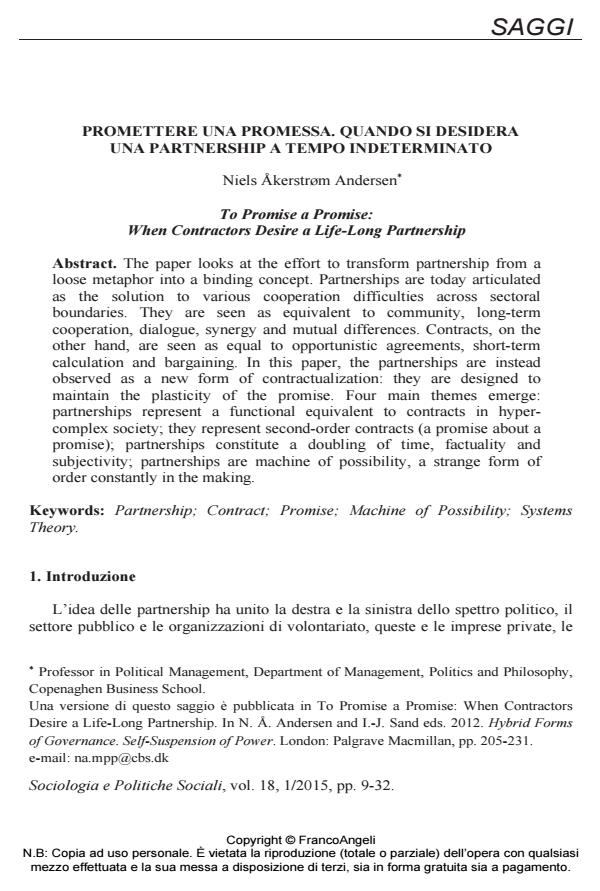Promettere una promessa. Quando si desidera una partnership a tempo indeterminato
Titolo Rivista SOCIOLOGIA E POLITICHE SOCIALI
Autori/Curatori Niels Akerstrom Andersen
Anno di pubblicazione 2015 Fascicolo 2015/1
Lingua Italiano Numero pagine 24 P. 9-32 Dimensione file 137 KB
DOI 10.3280/SP2015-001002
Il DOI è il codice a barre della proprietà intellettuale: per saperne di più
clicca qui
Qui sotto puoi vedere in anteprima la prima pagina di questo articolo.
Se questo articolo ti interessa, lo puoi acquistare (e scaricare in formato pdf) seguendo le facili indicazioni per acquistare il download credit. Acquista Download Credits per scaricare questo Articolo in formato PDF

FrancoAngeli è membro della Publishers International Linking Association, Inc (PILA)associazione indipendente e non profit per facilitare (attraverso i servizi tecnologici implementati da CrossRef.org) l’accesso degli studiosi ai contenuti digitali nelle pubblicazioni professionali e scientifiche
The paper looks at the effort to transform partnership from a loose metaphor into a binding concept. Partnerships are today articulated as the solution to various cooperation difficulties across sectoral boundaries. They are seen as equivalent to community, long-term cooperation, dialogue, synergy and mutual differences. Contracts, on the other hand, are seen as equal to opportunistic agreements, short-term calculation and bargaining. In this paper, the partnerships are instead observed as a new form of contractualization: they are designed to maintain the plasticity of the promise. Four main themes emerge: partnerships represent a functional equivalent to contracts in hypercomplex society; they represent second-order contracts (a promise about a promise); partnerships constitute a doubling of time, factuality and subjectivity; partnerships are machine of possibility, a strange form of order constantly in the making.
Parole chiave:Partnership; Contract; Promise; Machine of Possibility; Systems Theory.
Niels Akerstrom Andersen, Promettere una promessa. Quando si desidera una partnership a tempo indeterminato in "SOCIOLOGIA E POLITICHE SOCIALI" 1/2015, pp 9-32, DOI: 10.3280/SP2015-001002